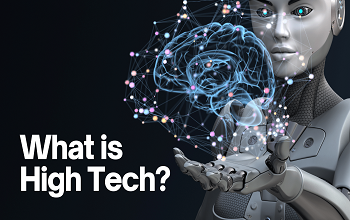In the ever-evolving landscape of technological advancements, the term “higher technology” has emerged to signify cutting-edge innovations that push the boundaries of what was once thought possible.
delves into the definition of higher technology and provides examples that showcase the transformative power of these advancements.
Defining Higher Technology
Higher technology, often referred to as advanced or emerging technology, encompasses innovations that represent the forefront of scientific and engineering progress.
These technologies are characterized by their ability to revolutionize industries, improve efficiency, and contribute to the overall advancement of society. In essence, higher technology goes beyond incremental improvements, introducing groundbreaking concepts that redefine the way we live, work, and interact.
Examples of Higher Technology
- Artificial Intelligence and Machine Learning
Artificial Intelligence (AI) and Machine Learning (ML) stand at the forefront of higher technology. These technologies enable machines to learn from experience, adapt to new information, and perform tasks that traditionally require human intelligence.
Examples include natural language processing, image recognition, and autonomous systems. Companies like Google, Facebook, and Tesla leverage AI and ML to enhance their products and services, showcasing the transformative potential of these innovations.
- Quantum Computing
Quantum computing represents a leap forward in computational power. Unlike classical computers that use bits to represent information as either 0 or 1, quantum computers use quantum bits or qubits, which can exist in multiple states simultaneously.
This parallel processing capability enables quantum computers to solve complex problems exponentially faster than their classical counterparts. Companies such as IBM and Google are actively working on advancing quantum computing, unlocking new possibilities in fields like cryptography, optimization, and drug discovery.
- 5G Technology
The fifth generation of wireless technology, commonly known as 5G, is a prime example of higher technology in the realm of telecommunications. 5G offers significantly faster data speeds, lower latency, and increased network capacity compared to previous generations.
This technology facilitates the widespread adoption of the Internet of Things (IoT), enabling seamless connectivity between devices. As 5G networks continue to roll out globally, industries ranging from healthcare to transportation are poised to undergo transformative changes.
- Biotechnology and CRISPR
Biotechnology, particularly the revolutionary gene-editing tool CRISPR-Cas9, exemplifies higher technology in the field of life sciences.
CRISPR allows scientists to precisely modify genes, opening up possibilities for treating genetic disorders, creating genetically modified organisms, and advancing personalized medicine. The potential of CRISPR has sparked ethical debates, but its impact on medicine and biotechnology is undeniable.
- Augmented and Virtual Reality
Augmented Reality (AR) and Virtual Reality (VR) have transcended the realm of entertainment and gaming, becoming integral components of higher technology. AR overlays digital information onto the real world, enhancing user experiences in various applications, from navigation to education.
VR, on the other hand, immerses users in a completely virtual environment. Companies like Microsoft (with HoloLens) and Oculus (a subsidiary of Meta) are driving innovation in AR and VR technologies, creating immersive solutions for training, collaboration, and entertainment.
- Robotics and Automation
The integration of robotics and automation into various industries is reshaping the future of work. Higher technology in robotics goes beyond simple automated tasks, with advanced robots capable of complex decision-making and collaboration.
From manufacturing and healthcare to logistics and agriculture, robots are streamlining processes, increasing efficiency, and performing tasks that are hazardous or repetitive for humans.
Conclusion
Higher technology is a dynamic and evolving concept that encapsulates innovations at the forefront of scientific and engineering progress. The examples mentioned in this article represent just a snapshot of the transformative power of higher technology.
As these advancements continue to unfold, they hold the potential to redefine industries, enhance our daily lives, and pave the way for a future that was once only imaginable in the realm of science fiction. Embracing and understanding higher technology is crucial for staying at the forefront of progress and harnessing the full potential of these groundbreaking innovations.
